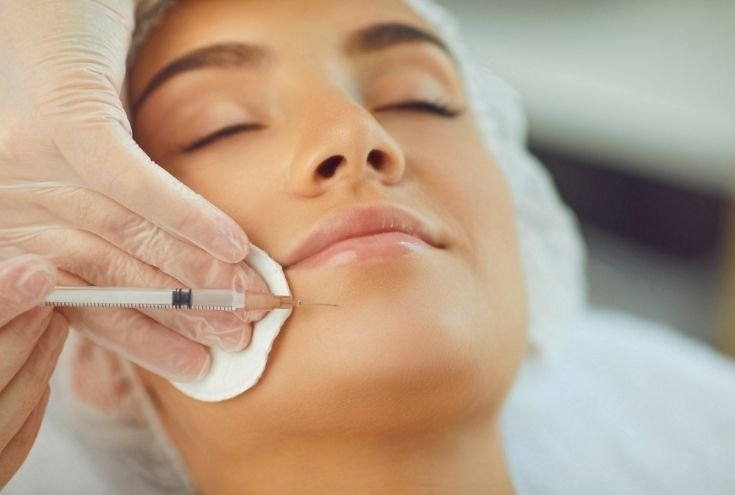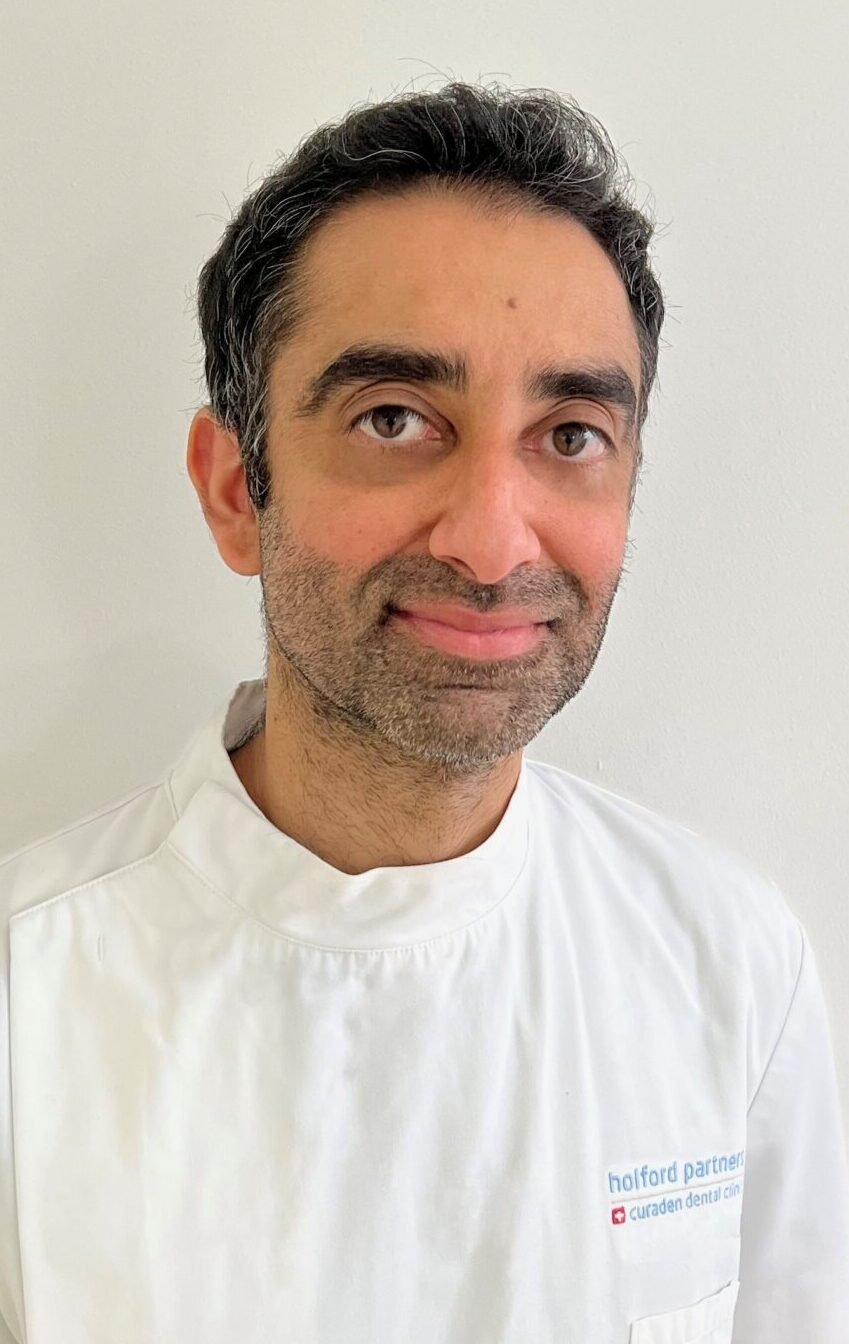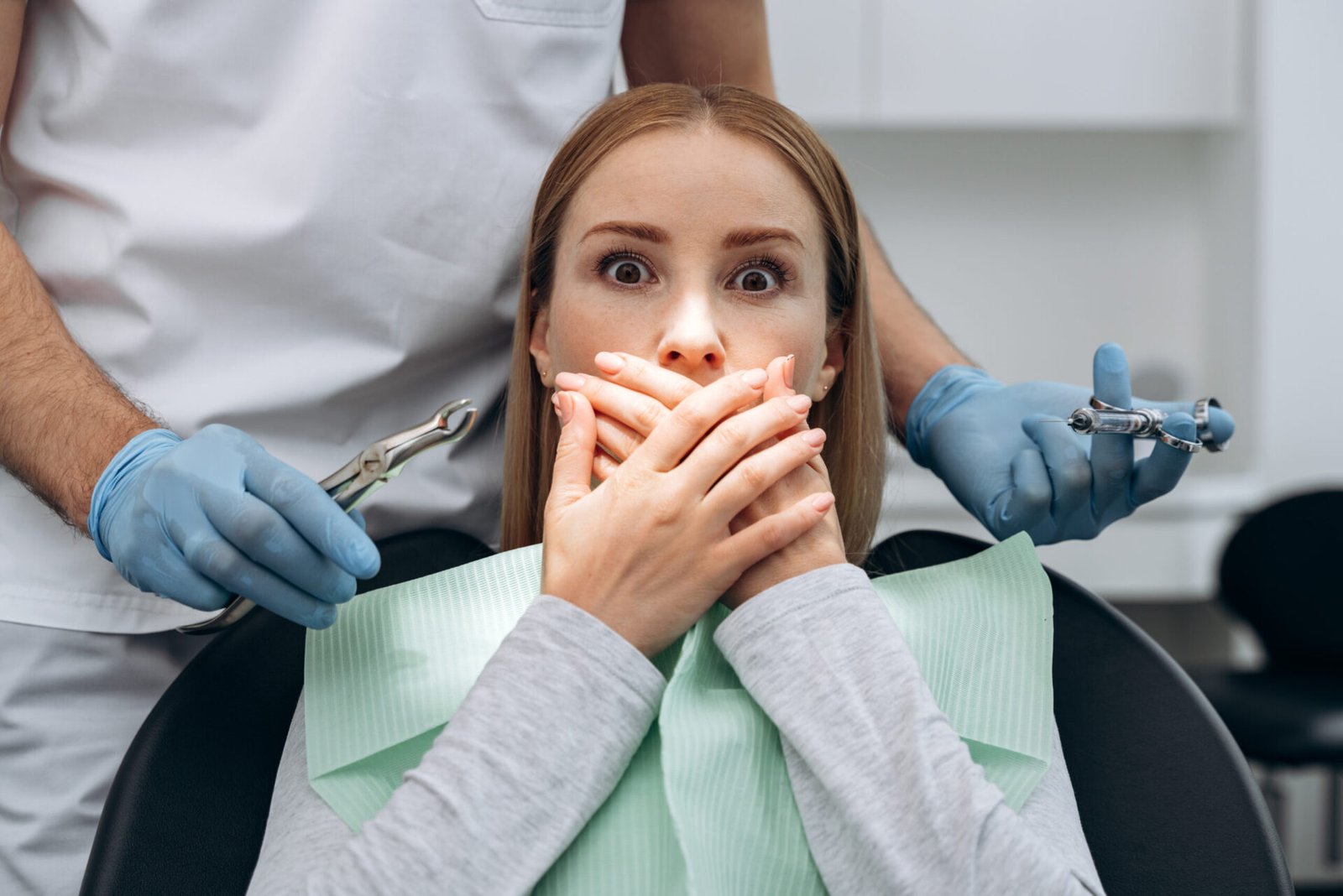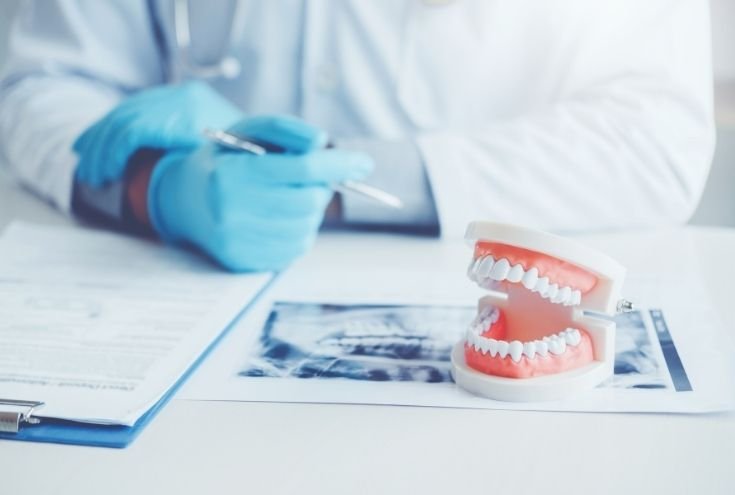

Facial Aesthetics
Rediscover your confidence with our range of facial aesthetics and skin rejuvenation treatments at Holford Partners Curaden in Mayfair, London. From smoothing fine lines to restoring volume and radiance, our expert clinicians use the latest non-surgical techniques to help you look refreshed, natural, and beautifully confident.
Facial Aesthetics
Facial Aesthetics
Rediscover your confidence with our range of facial aesthetics and skin rejuvenation treatments at Holford Partners Curaden in Mayfair, London. From smoothing fine lines to restoring volume and radiance, our expert clinicians use the latest non-surgical techniques to help you look refreshed, natural, and beautifully confident.

Facial Aesthetics
BEFORE & AFTERS
Botulinum Toxin - Forehead
Botulinum Toxin - Gummy Smile
Dermal Filler - Lips
Dermal Filler - Chin and Jaw
What Are Facial Aesthetics?
Facial aesthetics are non-surgical treatments that enhance and rejuvenate your appearance. These gentle, minimally invasive procedures such as anti-wrinkle injections, dermal fillers, and skin rejuvenation treatments, help smooth lines, restore lost volume, and refresh the overall look of your skin.
As we age, the natural production of collagen and elastin in our skin slows down. This leads to reduced firmness, fine lines, and wrinkles. Facial aesthetic treatments work to restore volume, boost hydration, and improve skin texture, helping you look refreshed and confident at any age.
Facial Aesthetics at Holford Partners Curaden
At Holford Partners Curaden, we combine science and artistry to achieve natural-looking, long-lasting results. Our highly trained and experienced clinicians offer a range of advanced treatments in a calm, modern setting in the heart of New Bond Street, Mayfair.
Our goal is simple – to help you look and feel your best. Alongside our leading dental services, we offer facial aesthetic treatments designed to revitalise your skin, enhance your features, and restore a youthful glow.
Our Treatments Include
– Anti-Wrinkle Injections (Botulinum Toxin): Smooth away lines and wrinkles for a more relaxed, youthful appearance.
– Dermal Fillers: Restore lost volume, sculpt facial contours, and enhance natural definition.
– Skin Rejuvenation Treatments: Boost your skin’s health and vitality with innovative options such as Polynucleotides and Sunekos, which hydrate, firm, and repair your skin from within.
For an even brighter, fresher look, our smile makeover treatments including tooth whitening and contouring can beautifully complement your facial rejuvenation treatments.
Your Treatment Journey
Every treatment begins with a personalised consultation, where your clinician will discuss your goals, assess your skin, and design a plan tailored to you. Results are subtle, natural, and designed to enhance your features – never to change who you are.
While results can vary, some treatments may require top-ups or maintenance sessions to achieve and maintain the best outcome. Choosing an experienced, medically trained practitioner, such as one of our expert dentists ensures your treatment is both safe and effective.
Benefits of Facial Aesthetics
Facial aesthetic treatments offer a range of benefits for those looking to enhance their natural beauty and rejuvenate their appearance.
Some key benefits include:
– Minimally invasive and non-surgical: Treatments involve little to no downtime, with minimal discomfort or scarring.
– Youthful appearance: Helps to smooth wrinkles and fine lines, giving the face a fresher, more revitalised look.
– Enhanced facial balance: Improves facial contours and symmetry for a naturally harmonious result.
– Boosted confidence: A rejuvenated appearance can help improve self-esteem and overall wellbeing.
Common Uses of Facial Aesthetics
Facial aesthetic treatments can be tailored to a variety of concerns and desired outcomes.
Popular treatment options include:
– Anti-wrinkle injections (Botulinum Toxin): Soften expression lines such as crow’s feet and forehead wrinkles.
– Dermal Fillers: Restore lost volume in the cheeks, lips, and jawline to enhance definition and lift.
– Non-surgical Facelifts: A combination of fillers and botulinum toxin to subtly lift and tighten the skin.
– Jawline and Chin Enhancement: Create a more sculpted and balanced facial profile.
– Non-surgical Nose Reshaping: Refine the shape of the nose without the need for surgery.
What to Expect
While facial aesthetic treatments can deliver beautiful, natural-looking results, it’s important to have realistic expectations. These treatments are not a substitute for permanent surgical procedures such as rhinoplasty or facelifts.
At Holford Partners Curaden, our qualified and experienced clinicians will provide a personalised treatment plan and take the time to discuss your goals and answer any questions.
Results are not permanent and typically last between 3 to 6 months, depending on the treatment and individual factors. Regular maintenance sessions can help you maintain your refreshed, youthful look.
Botulinum toxin, commonly known as BOTOX®, is a purified neurotoxin derived from the bacterium Clostridium botulinum. It is widely used in both medical and cosmetic treatments to safely and effectively relax targeted muscles, helping to smooth the skin and reduce the appearance of wrinkles.
When injected in small, controlled doses, botulinum toxin temporarily blocks the release of acetylcholine – the chemical responsible for transmitting nerve impulses to muscles. This prevents the muscles from contracting, resulting in a smoother, more relaxed appearance.
Medical Uses
Botulinum toxin has a range of therapeutic applications and can help treat several medical conditions, including:
– Muscle spasms related to neurological disorders such as cerebral palsy or multiple sclerosis
– Chronic migraines, often linked to jaw clenching, bruxism, or TMJ (temporomandibular joint) issues
– Excessive sweating (hyperhidrosis), by reducing overactive sweat gland activity
Cosmetic Uses
Cosmetically, botulinum toxin is one of the most popular and effective non-surgical treatments available. It helps to:
– Reduce fine lines and wrinkles, especially around the eyes, forehead, and mouth
– Relax facial muscles responsible for expression lines, creating a smoother, more youthful look
– Correct a gummy smile, by relaxing the upper lip so it doesn’t rise too high when smiling
Benefits of Botulinum Toxin
– Quick and non-surgical: Treatment takes only a few minutes and requires no downtime.
– Safe and precise: When administered by one of our experienced dentists, Botulinum toxin is a well-established and reliable treatment.
– Effective and long-lasting: Visible improvements can be seen within days, lasting up to 3–6 months, depending on the area and individual response.
Treatment Process
Botulinum toxin is injected using an ultra-fine needle into specific facial muscles. The procedure is typically comfortable and completed within minutes.
Results usually begin to appear within 3–5 days, with full effects visible after about two weeks. Over time, muscle activity gradually returns, and repeat treatments help maintain your refreshed appearance.
Common Treatment Areas
Botulinum toxin can be precisely applied to several facial areas to reduce wrinkles and improve symmetry, including:
- Forehead: Smooths horizontal lines caused by the frontalis muscle.
- Glabella (frown lines): Reduces vertical creases between the eyebrows.
- Eyes (crow’s feet): Softens lines formed by squinting or smiling.
- Mouth: Minimises fine lines and wrinkles around the lips.
- Jawline: Slims and softens the jaw by relaxing the masseter muscles, helping with clenching and bruxism.
Safe, Professional Treatment
At Holford Partners Curaden, all treatments are carried out by our experienced dentists with extensive experience in facial aesthetics.
Your clinician will assess your facial anatomy, discuss your concerns, and develop a personalised treatment plan to achieve subtle, natural-looking results that enhance, not alter, your natural beauty.
Dermal fillers are injectable treatments used to restore volume, smooth fine lines and wrinkles, and enhance natural facial contours. They provide instant rejuvenation by filling areas of lost volume and improving facial balance and definition.
Most dermal fillers are made from hyaluronic acid (HA) – a substance naturally found in the skin that helps retain moisture, softness, and elasticity. Some fillers may also be made from other materials, such as collagen, poly-L-lactic acid, or calcium hydroxylapatite, depending on the desired results and treatment area.
How Dermal Fillers Work?
When injected beneath the skin, dermal fillers physically lift and smooth the treated area. The hyaluronic acid in the filler also attracts and retains water, further enhancing hydration and plumpness. This combination helps to restore youthful volume, soften lines, and rejuvenate areas affected by ageing, sun damage, or natural facial structure.
The procedure is quick and minimally invasive, typically taking around 15–30 minutes. Your practitioner may apply a topical anaesthetic (numbing cream) to ensure comfort throughout the treatment.
Benefits and Uses of Dermal Fillers
Dermal fillers offer a wide range of benefits, helping to refresh and reshape the face with natural-looking results.
Key benefits and uses include:
– Reducing the appearance of wrinkles and fine lines around the mouth, nose, and eyes
– Adding volume and contour to the cheeks and lips
– Improving the appearance of acne scars or depressions in the skin
– Enhancing jawline and chin definition for improved facial balance
– Restoring overall fullness and youthful radiance to the face
Dermal filler treatments are non-surgical and involve little to no downtime. Results are visible immediately and typically last 3–12 months, depending on the type of filler and treatment area.
Common Treatment Areas
Dermal fillers can be precisely placed to restore balance and enhance natural beauty in various areas of the face:
- Lips: Add shape, volume, and definition while softening lines around the mouth.
- Cheeks: Restore youthful fullness and lift the mid-face.
- Nasolabial Folds: Smooth the lines running from the nose to the corners of the mouth.
- Marionette Lines: Soften creases extending from the corners of the mouth to the chin.
- Tear Troughs: Reduce hollowness and dark circles beneath the eyes.
- Chin: Enhance projection and facial symmetry.
- Jawline: Define and contour for a more sculpted profile.
- Nose: Refine shape and symmetry with a non-surgical rhinoplasty.
- Temples: Add volume to reduce hollows and restore a youthful contour.
Safe, Personalised Treatment
At Holford Partners Curaden, our experienced practitioners will assess your facial anatomy, discuss your aesthetic goals, and create a bespoke treatment plan to ensure balanced, natural-looking results.
It is important to note that dermal filler results are not permanent. Most patients choose to have maintenance treatments every 6–12 months to sustain their refreshed appearance.
As with all injectable treatments, dermal fillers should only be administered by qualified and licensed professionals to ensure your safety and achieve the best possible results.
Skin Rejuvenation
Over time, our skin naturally loses elasticity, hydration, and firmness. Environmental factors, sun exposure, and the ageing process can all contribute to a dull or tired complexion. At Holford Curaden, we offer advanced injectable skin rejuvenation treatments designed to restore vitality and promote healthy, youthful-looking skin from within.
Polynucleotides
They are an innovative regenerative treatment designed to stimulate your skin’s natural repair processes. Derived from highly purified DNA fragments, they work at a cellular level to rejuvenate and revitalise the skin.
Benefits of Polynucleotides:
– Boosts collagen and elastin production
– Improves skin texture, tone, and elasticity
– Deeply hydrates the skin for a radiant glow
– Reduces fine lines and wrinkles
– Helps repair and protect skin from oxidative stress
– Suitable for delicate areas such as under the eyes and neck
Polynucleotides help restore structure and function to ageing or damaged skin, encouraging long-term improvement rather than simply masking signs of ageing.
Sunekos
This is a unique injectable treatment combining hyaluronic acid with a patented blend of amino acids. This combination supports the regeneration of the extracellular matrix (ECM) – the skin’s natural support network – leading to visible improvement in skin quality and elasticity.
Benefits of Sunekos:
– Restores natural volume and elasticity
– Smooths fine lines and wrinkles
– Enhances hydration and skin radiance
– Improves skin firmness and texture
– Treats areas such as the face, neck, décolletage, and hands
– Delivers natural-looking, refreshed results
Sunekos is ideal for patients seeking subtle, natural rejuvenation without adding volume or changing facial contours.
Why Choose Skin Rejuvenation Treatments?
All treatments are performed by our experienced Dr Stella Kourkouta, who will tailor your plan to your individual skin needs and goals. Whether you are looking to brighten, hydrate, or repair, our regenerative skin treatments like Polynucleotides and Sunekos can help restore youthful radiance safely and effectively.
After receiving a facial aesthetics treatment, following the correct aftercare is essential to ensure the best possible results and to minimise any risk of side effects or complications.
We will provide specific guidance tailored to your treatment, but the following general advice can help support a smooth recovery and optimal outcome.
General Aftercare Advice
– Avoid touching, rubbing, or massaging the treated area for at least 24 hours after treatment.
– Avoid heat exposure, including saunas, steam rooms, and hot baths for 24–48 hours.
– Refrain from strenuous exercise for at least 24 hours, as increased circulation may affect the results.
– Avoid direct sunlight and UV exposure for at least 24 hours. Always use a high SPF sunscreen if you need to go outdoors.
– Do not consume alcohol for 24 hours, as it can increase swelling or bruising.
– Try to sleep on your back the first night to avoid putting pressure on the treated areas.
– Cleanse gently with mild soap and water, and apply any recommended ointments or creams as directed by your practitioner.
What to Expect
Mild redness, swelling, or tenderness at the injection site is normal and should resolve within a few days.
Applying a cool compress can help reduce discomfort.
Avoid applying makeup to the treated area for the first 12–24 hours unless advised otherwise.
When to Contact Us
If you experience significant pain, prolonged swelling, or any unusual symptoms following your treatment, contact your practitioner immediately for advice.
Remember, every treatment is unique, and aftercare instructions may vary depending on the specific procedure you’ve received. Always follow the personalised guidance provided by your clinician at Holford Partners Curaden to achieve the safest and most effective results.
The cost of facial aesthetic treatments varies depending on the areas being treated, the type of product used, and the amount of material required to achieve your desired result.
During your consultation at Holford Partners Curaden, your clinician will discuss your goals, assess your facial anatomy, and create a personalised treatment plan with clear pricing before any treatment begins.
This tailored approach ensures that you receive the most effective results while maintaining transparency and value at every step.
ANTI-WRINKLE / MUSCLE RELAXING INJECTIONS ……………….. from £350
DERMAL FILLERS ……………….. from £450
SKIN REJUVENATION INJECTIONS ……………….. from £350
Facial Aesthetics
BEFORE & AFTERS
Botulinum Toxin - Forehead
Botulinum Toxin - Gummy Smile
Dermal Filler - Lips
Dermal Filler - Chin and Jaw
Facial Aesthetics
Facial Aesthetics
Who Offers Facial Aesthetics?
Facial Aesthetics
Frequently Asked Questions
The treatment itself will last around 30 minutes to an hour with the results lasting between 6-12 months. Most patients prefer to have top up sessions every 3-4 months before the effects begin to wear off and maintain their new more youthful appearance.
Yes, we do offer free facial aesthetics consultations. Our skilled clinicians will go through all the treatment options available to you and who better to see than a dentist, professionally trained for many years and knowledgeable about the facial nerves and muscles. This leads to better results and your are far less likely to experience any complications.
Dermal fillers are another popular cosmetic procedure that are used to add volume and fullness to the face. They can be used to plump up the lips, smooth out wrinkles and fine lines, and add volume to the cheeks.
Anti-wrinkle injections are a popular cosmetic procedure that uses a form of botulinum toxin to temporarily paralyze certain facial muscles. This can help to reduce the appearance of wrinkles and fine lines on the face, particularly in the forehead, around the eyes, and around the mouth.
The results of facial aesthetic procedures can vary depending on the specific procedure and the individual person. Botox injections typically last for 3-6 months, while dermal fillers can last for 6-12 months or longer.
Recovery time after facial aesthetics varies depending on the specific procedure, but most people are able to return to their normal activities immediately or the following day. Some swelling, redness, and pain may occur, but they usually subside within a few days.
Facial aesthetic treatments are considered very safe when performed by a qualified and licensed practitioner.
At Holford Partners Curaden, all facial aesthetic procedures are carried out by our highly trained dentists, who have extensive experience in facial anatomy and injection techniques. Their detailed understanding of the muscles, nerves, and underlying structures of the face ensures that treatments are performed with the highest standards of safety, precision, and care.
Understanding the Risks
As with any medical procedure, facial aesthetic treatments do carry some potential risks and side effects. However, these are typically mild, short-lived, and easily managed.
Common temporary side effects may include:
– Mild bruising, redness, or swelling at the injection site
– Tenderness or slight discomfort during or after treatment
– Headaches (usually short-lived)
– Numbness or tingling around the treated area
– Itching or minor irritation at the injection site
Rare Complications
In rare cases, more serious complications can occur, such as:
– Allergic reactions to the injection product
– Infection at the injection site
– Vascular complications (such as blood clots or restricted blood flow)
– Vision changes or blindness, in extremely rare instances
It’s important to remember that these complications are exceptionally uncommon and can be greatly minimised by choosing an experienced, medically qualified practitioner.
Your Safety Comes First
Before any treatment, your clinician will carry out a thorough consultation, reviewing your medical history, allergies, and treatment goals. This ensures that the procedure is suitable and safe for you.
At Holford Partners Curaden, patient safety and satisfaction are our top priorities. With expert practitioners, medical-grade products, and precise techniques, we aim to deliver beautiful, natural-looking results while keeping your wellbeing at the heart of every treatment.






